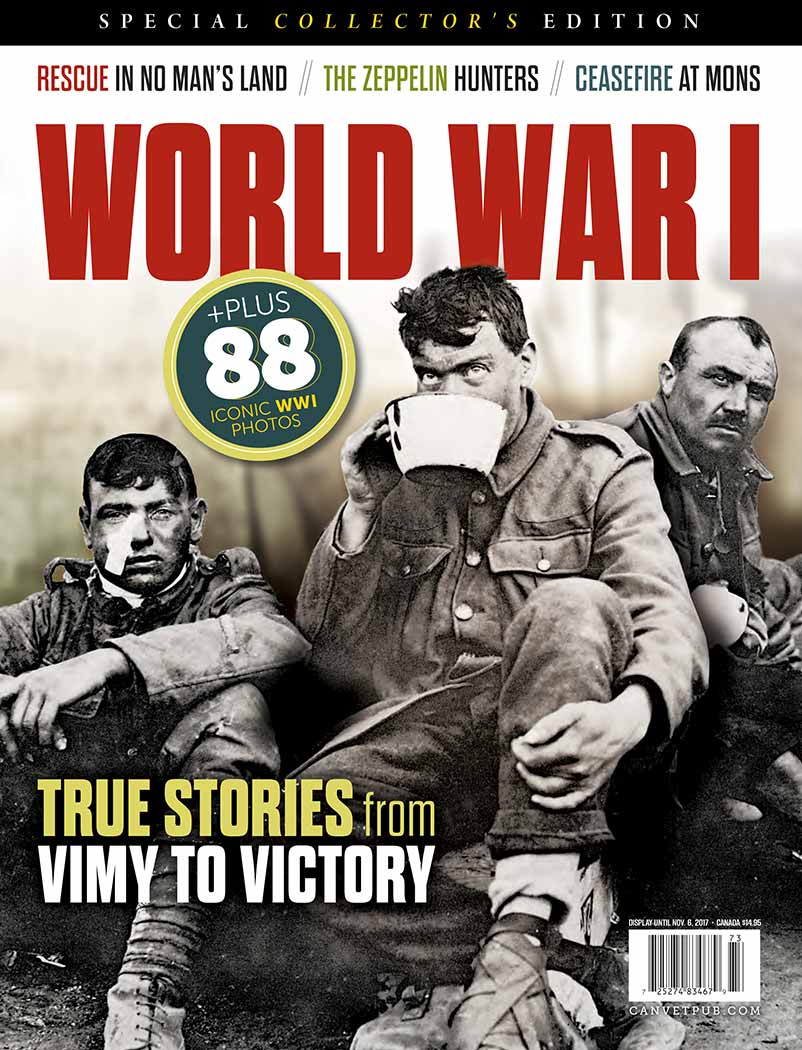
The stories in this collection are taken from issues of Legion Magazine and its predecessor, The Legionary, dating back to 1926. They are sprinkled between news on Royal Canadian Legion conventions, elections and the pressing veterans issues of the day. They are set during the First World War, the war in which all those early founders of the Legion and its predecessors had fought.
Canada had a population of less than 7.8 million people in 1914 and yet nearly
620,000 enlisted for this faraway war. These were not professional soldiers, sailors and airmen. These were citizens who stood up to tyranny and enlisted for the duration. The cost was brutal, with approximately 66,000 dead and more than 172,000 wounded.
Those who returned had a special bond and a need to share their stories, not necessarily with everyone, but with those who would understand, because they had served as well. They were the ones who survived.
They found that audience in their fellow readers of The Legionary. In some cases, the stories reflect back years after the events occurred. Others are cobbled together from letters written shortly after the events. Some of the more historical pieces are written in the voice of the official combat report or unit diary that simply explained what happened a day, or even hours, earlier.
These are memoirs and personal histories of large actions and small comforts. There is humour, pain, reflection and pride entwined in them.
Most of these stories appeared in the years between the first and second world wars.
As a sequel to War Stories published by Legion Magazine in 2016, these stories all concern events that happened in the last part of the war, between 1917 and 1918.
The authors of these articles are no longer with us and the editors of the day left little to tell us who they were, both during the war and in civilian life.
Their intended audience is also gone but new generations can at least glimpse at what they went through and how they saw the world
at war.
The words speak for themselves. They are the words of those who were there.
A veteran still serving during the First World War writes home, looking back on his first impressions of arriving on a battlefield in wartorn Europe.
A newspaperman serving in the Canadian Army uses his shift in a unit headquarters to sum up his thoughts after a year of fighting and seeing a major victory at Vimy Ridge in 1917.
Twelve of the big German airships were shot down by British planes between June 1915 and August 1918 and flyers from Canada played a leading role in the destruction of exactly half of them.
Jim was a company’s sniper. He joined up in Toronto with a Highland battalion was in France early in the war. He never did master the “jump to it” spirit, which was required in the various forms of drill. But he did like a rifle and he was a crack shot.
The fall rains had left the whole area in front of Passchendaele a spongy swamp churned up by the war for three years. One could only walk on the wooden “bathmats” laid down by the engineers. Guns required heavy wooden platforms. Roads were built of two-and-a-half inch planks.
The Mediterranean Sea was full of German submarines. In spite of this, everyone was in great spirits. All scoffed at the idea of being torpedoed. Little did we realize what Fate hid from us—the torpedoing of our vessel with hundreds drowned.
A drummer in a bugle band walks today with a slight limp. A company corporal of the same battalion wears a Military Medal ribbon. These distinctions were achieved under the same circumstance, chief among which was a Hun rifle bullet.
Soon after midnight, a message was received that D Company had entered Mons, whereupon Lieutenant P.P. Hutchison led his platoon forward to one of the bridges, temporarily repaired it with planks and crossed in single file. The streets were deserted.